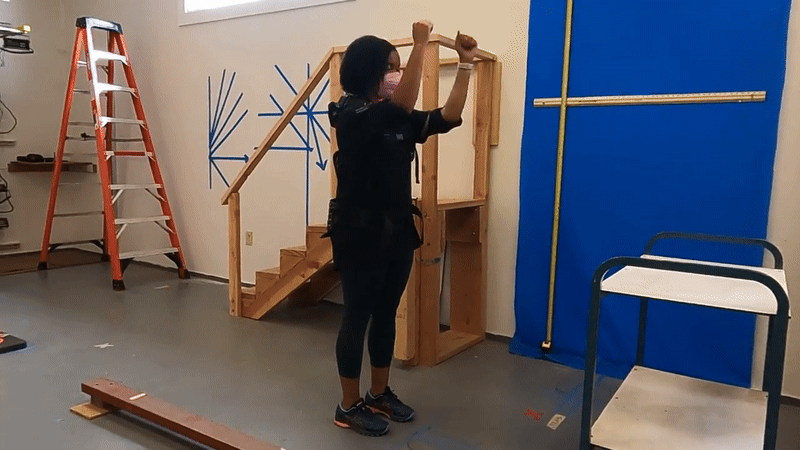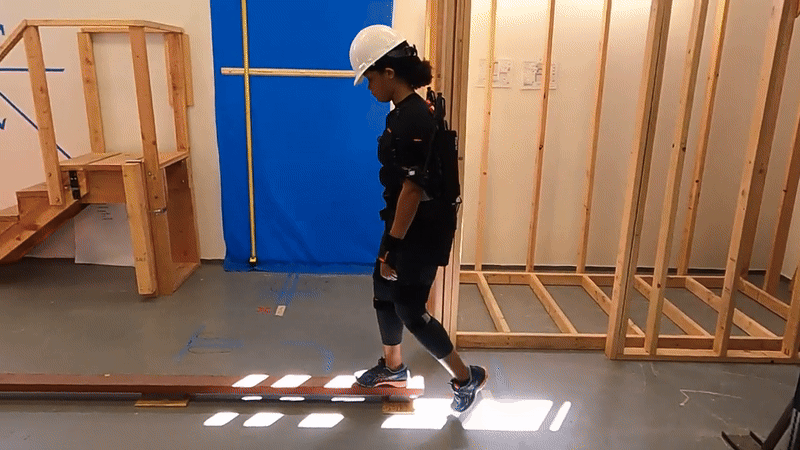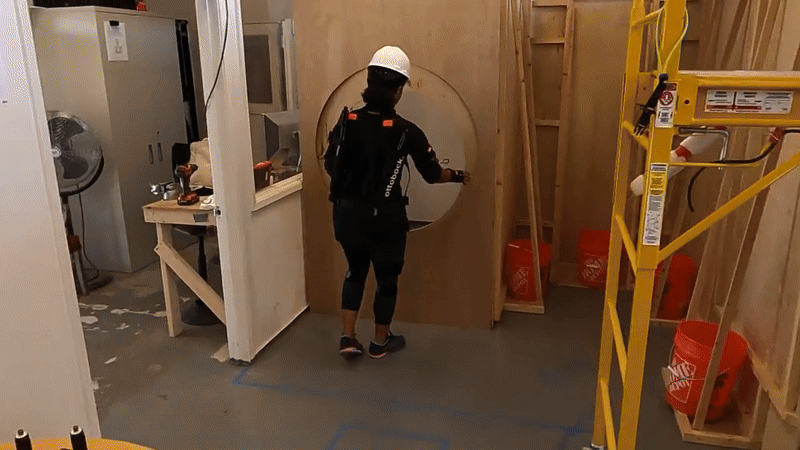Using the ANSUR II anthropometric database, I derived sex-specific coefficients to estimate body segment dimensions (bideltoid breadth, shoulder-to-elbow length, cervicale height, iliocristale height) and applied these equations to predict settings on three ASEs:
ShoulderX by Ottobock (previously SuitX)
Paexo Shoulder (Ottobock)
EVO (Ekso Bionics).
With these predictions, we invited participants into the lab for a study. Each participant was fitted with the each ASE based on our equations, and then we double-checked the fit and support levels.
The study achieved 83% accuracy in force support predictions and 85% in fit settings, showing that simple models can guide exoskeleton fitting without an expert present.
UC San Francisco Collaborators: Alan Barr MS, Carisa Harris-Adamson PhD, David Rempel MD/MPH
Virginia Tech Collaborators: Aanuoluwapo Ojelade PhD, Sunwook Kim PhD, Maury A. Nussbaum PhD
Designing for Every Body
A Data-driven Approach to Fitting Exoskeletons
On construction sites, shoulder injuries are a common reason workers lose weeks of valuable time. Passive arm-support exoskeletons (ASEs) promise to reduce strain by helping carry the load of overhead tasks.
However, fitting these devices usually requires an expert. For smaller companies, that’s a barrier that can make the technology impractical.
Our research group at the University of California Ergonomics Lab set out to answer a simple question: could we predict the right fit and support settings for a worker using just their height, weight, and sex?
Exoskeletons in Action
Once fitted, participants navigated a simulated construction site to test the exoskeletons in realistic conditions. While wearing each device, they:
Walked across a beam to evaluate balance while wearing an arm-support exoskeleton (ASE).
Climbed ladders and stairs, noting their perceived safety when wearing a restrictive technology.
Moved through tight spaces while avoiding hitting barriers with the exoskeleton.
These activities not only revealed whether the predicted fit and support settings remained while moving through a simulated construction site, but also provided insights into balance, safety perception, and overall usability.
Reflections on Fit, Safety, and Adoption
This project was my first hands-on experience conducting user experience (UX) evaluation in a research setting. What I took away most from this project was how critical UX evaluation is to the design process and to product adoption in the real world.
The construction site simulation made it clear that beyond equations and technical performance, success depends on whether users feel safe, balanced, and comfortable while wearing the device.
This experience shifted my perspective: even the most technically accurate model has limited impact if it doesn’t account for human factors and user trust.
Personal Contribution
My contributions included deriving predictive coefficients from the ANSUR II database, running subject trials (including serving as a test subject), and applying the prediction equations to assess fit and support settings for the ShoulderX, Paexo Shoulder, and EVO exoskeletons.
I also presented the study at the Center for Disease Control NIOSH National Occupational Research Agenda Conference in Salt Lake City (2022) where I was honored with Best Podium Presentation.



